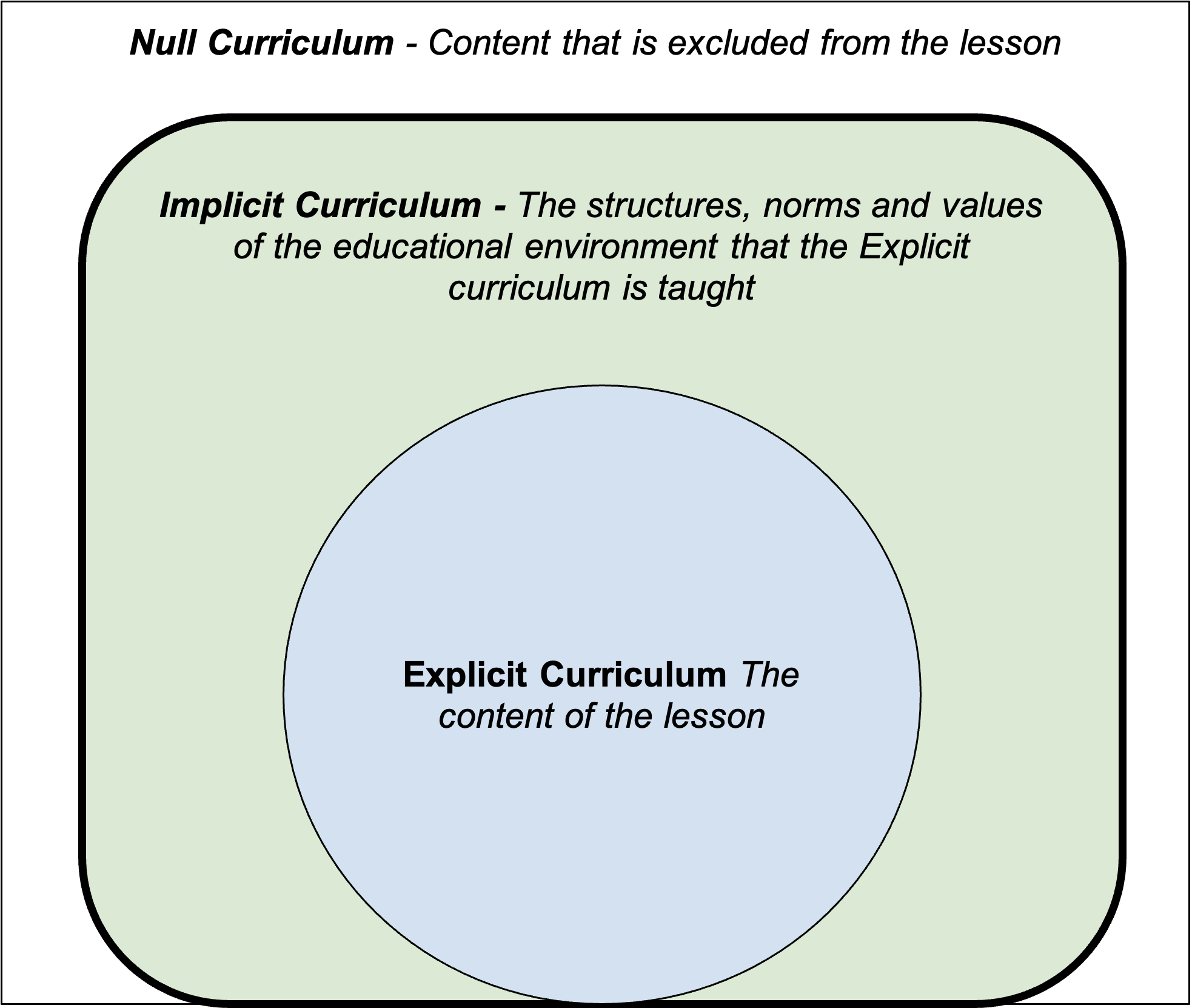The Implicit Curriculum of Outdoor Education
Core to my belief that Outdoor Education can and should be for everyone, is that it is actually less costly than traditional education. When considering only the explicit curriculum, this may seem lofty and unrealistic. When you factor in what students learn from the implicit curriculum though, the balance seems to tip well in favor of teaching outside.
In the 1980’s Elliot Eisner introduced his educational framework that describes three types of curriculum all schools knowingly or unknowingly teach, the Explicit, the Implicit and the Null. The Explicit curriculum is the planned content of a class. The Implicit curriculum is what students learn by the nature of the educational environment. It is not the course content, it’s the values, norms and structures that are taught and reinforced by how the content is delivered. The Null is what is purposefully left out of the curriculum. One of the major benefits of outdoor education is that the implicit curriculum is so robust.
At the end of a weeklong outdoor leadership course, where the explicit curriculum involves technical outdoor skills, leadership and group management, two of my students' closing reflections included lessons from the implicit curriculum.
Student 1: “I’ve known for a while that I’ve been over consuming cannabis and have wanted to reduce my intake, but it’s been hard to initiate. This trip was an opportunity to try going off it completely and I plan to continue staying off cannabis for the summer.”
Student 2: “Without my phone, I have not felt anxious about what I’m missing or scrolling for the next ‘thing’. I cannot remember the last time I was this focused and present with the people and natural environment around me. It feels great.”
The outdoor leadership courses I run are set in a backcountry environment, where we have no access to cellphone reception, and are separated from the people, systems, and structures that reinforce our typical patterns and behaviors. This is the Implicit curriculum of extended backcountry expedition courses. The learning outcomes expressed by my students are hard to plan, teach, and measure. They are perfect examples of where the implicit curriculum shines, adding weight to the claim that outdoor education can be more impactful, dollar for dollar, than traditional education.
For anyone looking to take a break from cannabis, check out the T-Break guide developed by Tom Fontana, counselor at the University of Vermont.
If you’re looking to take a cellphone break: Find any natural space accessible to you (city park, local nature trails, etc). Plan how long you’re going to be out for and gather any necessary supplies to be out that long. Let your people know where you’re going, for how long, and when they should expect to hear from you. Establish a plan with your people for what they should do if they haven’t heard from you. Turn your phone off, seal it in a letter envelope, put it in a ziplock bag (for weather proofing), and bury it at the bottom of your backpack - this creates enough of a hassle of turning your phone on so that you’ll only do so if it’s truly a need.


